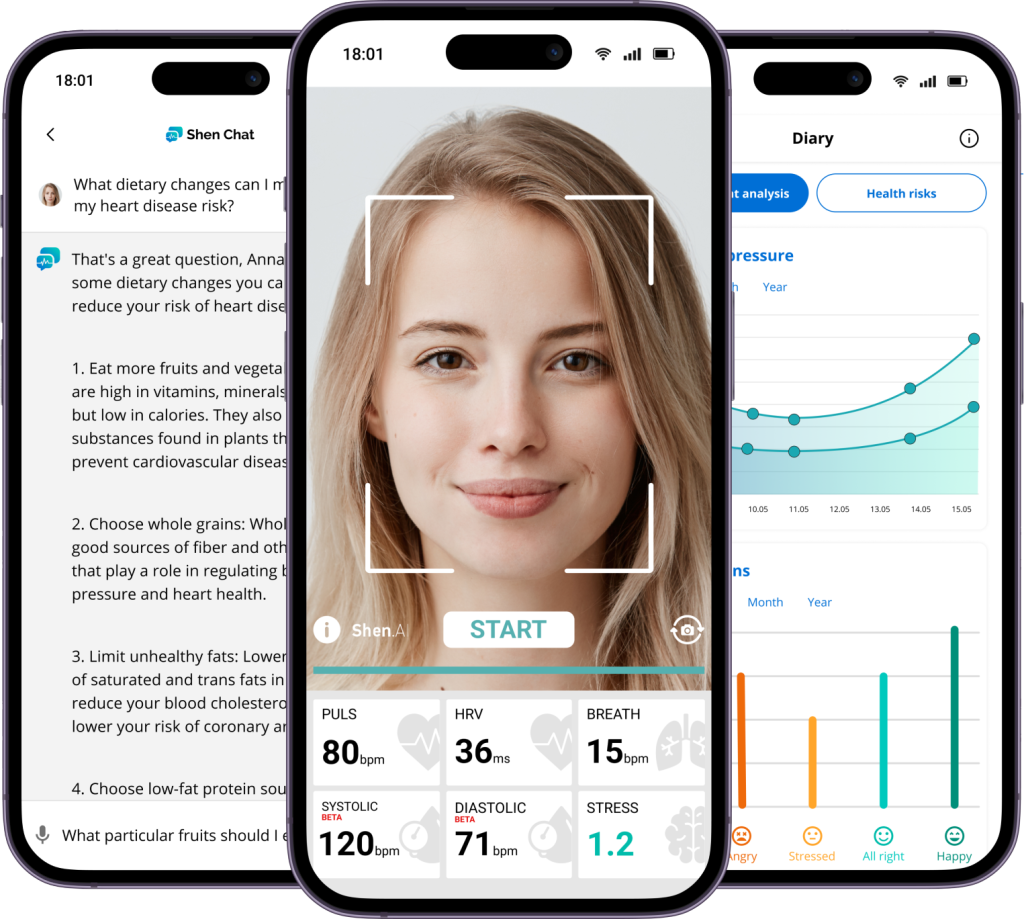Patient satisfaction is the cornerstone of healthcare organizations. Today it’s not enough to provide services; you also need your patients to be satisfied and engaged with your company.
When patients are satisfied with their care, they’re more likely to return for future appointments, recommend your practice to friends and family members, and stay loyal over time. But most importantly, greater engagement contributes to improved health outcomes and optimizes the clinic’s work.
So, in this article, we’ll describe the most effective patient engagement strategies that can improve patient engagement rates, and we’ll set out how to use AI for the best digital health experience.
Why does patient satisfaction influence patient engagement?
Patient satisfaction is a measure of how well patients evaluate their experience with medical services. Patients who are satisfied with their care are more likely to engage in their recovery by taking medications regularly or following treatment plans. They are also more likely to participate in clinical trials because they understand the importance of research for better health outcomes.
However, this also works in the opposite direction since patient engagement influences their satisfaction. An engaged patient actively participates in their treatment, and the clinic encourages and stimulates them to do so. This builds a trusting relationship between doctors, patients, and healthcare organizations.
Thus, patient satisfaction and engagement are interrelated. By working on patient services, you motivate individuals to be more interested. And this directly affects the patient’s overall impression of the healthcare experience.
What creates patient satisfaction?
It’s important to note many things can influence a patient’s expectations of the health system in advance — previous experiences with other organizations, advertising campaigns promoting one particular product over another, and word of mouth. But some key factors determine patient satisfaction:
- Understanding. Most patients focus on how their personal history is perceived, how carefully they are listened to, whether clarifying questions are asked and how unbiased healthcare professionals are. At the medical appointment, people feel vulnerable, and they react sharply to indifference or judgment, even if this happens unintentionally.
- Convenience. This includes the comfort of the patient while they’re with the service provider (appearance, atmosphere), as well as the convenience of communication – if there are digital health services, how easy it is to make appointments with specialists, to obtain information about the results of the examination, and so on?
- Integrative Services. For many chronically ill patients, incorporating mindfulness practices, yoga, meditation, and other components into health outcomes plays a big role. When a company provides this opportunity, it has a major impact on patient satisfaction.
- Transparency. Uncertainty in obtaining medical services always causes frustration for patients. When a person doesn’t know what the doctor is going to do, how much the services will cost, what the treatment plan is, and if there are other options, it hurts the patient’s experience with the healthcare system.

How can patient satisfaction be improved?
Some general rules can help the healthcare organization take a move in the right direction.
Firstly, you should have a clear understanding of the patient experience. Knowing what patients need and want, as well as how they feel about the services they receive, is essential to increasing patient satisfaction. Once you know what patients are experiencing, you can take steps to improve patient engagement.
Secondly, analyze your audience. Are they young? Old? Male or female? What languages do they speak? What cultures do they belong to? Are some of them more tech-savvy than others? All these questions will help create a better environment and accommodate the needs of each patient.
And finally, listen carefully to all participants and always ask for feedback. This can help you uncover communication problems and improve the healthcare system.
Now let’s talk about five particular practical tips.
1. Create an environment of caring
Creating an environment where patients feel cared for, respected, heard, and valued is key to building a culture of caring. There are several steps you can take to create a caring health system:
- Start by getting everyone in the company on board with the vision to build a culture of caring. This will help ensure that every employee is working toward the same goal and understands what it takes to achieve it.
- Create clear expectations for yourself and your team so that everyone has access to information about what makes a good patient experience. Make sure those expectations are measurable so that staff members know when they have reached — or failed — their goals for improving patient participation.
- Encourage your team’s creativity by encouraging them to come up with ideas about how they could improve patient engagement in healthcare delivery.
2. Improve communication with patients
Good communication skills have a huge role in diagnosing and treating patients. Proper communication and a deeper understanding of patients have a positive impact on their mental health and increase overall satisfaction with visiting a specialist. These rules will be a great solution to improve patient engagement:
- Use the right tone. Avoid an arrogant and condescending attitude; use simple and concise language instead. Non-verbal communication is also important, as it communicates your empathy and builds the patient’s trust.
- Listen actively. Active listening allows you to get the maximum amount of important information from the patient’s story. Moreover, when the patient feels that they are listened to attentively, it helps to reduce their anxiety and stress.
- Engage the patient. Ask as many open-ended questions as possible. This will help to get useful patient data, as well as create a personal connection.
3. Focus on patient education
A great way to engage patients is to help them better understand their condition. By providing patients with health knowledge, you can help them feel confident in following through on treatment plans. Here is some advice you can follow:
- Help patients understand how to take their medication properly.
- Explain that health behavior changes like diet, exercise, and weight management can be a reason for improved health.
- Teach patients about the importance of health screenings that may help detect early signs of illness before they become serious problems later on down the road.
- Encourage patients to talk about their health status with loved ones and friends. This can help them feel more supported and less alone in the process of managing their conditions.
4. Be accessible at all times
For many patients, it is very important to know that they can ask for help at any time – write a clarifying question, sign up for an urgent consultation, and so on. Therefore, the ability to contact the company at all times is a factor that can greatly increase patient engagement. The following points can make your services more accessible:
- Have a dedicated call center.
- Offer an online chat service.
- Create an app for your website and social media presence (i.e., Facebook).
5. Use AI for the best patient experience
Artificial intelligence (AI) offers a way for organizations to use data analytics tools that can help them understand their patients’ unique experiences with the hospital or clinic. AI analyzes and keeps large amounts of personal health records — including clinical history and current information on vital signs and lab tests — and uses that information to predict diseases.
To improve patient satisfaction and experience, AI provides several digital health features such as:
- A chatbot that lets patients find the right doctor and get appointments.
- An AI-powered platform for answering patient questions about treatment options and providing health education.
- An electronic health record system for keeping all data in one place.
- A way for patients to talk with their doctor about a specific condition or problem through shared video chat and other digital health technologies.

How to improve patient satisfaction with Shen.AI
Shen.AI is a digital health tool for the measurement of physiological and mental vital signs. Patients can use Shen.AI to analyze their health status, track symptoms of chronic diseases, and add important health data such as blood pressure, heart rate or heart rate variability.
With the help of the integration of Shen.AI SDK, you can get some great benefits:
- Time optimization.
Patients will not have to talk about their records repeatedly because you can use data shared to electronic health records. Shen.AI helps to save doctors and nurses up to 30 seconds per patient. So this also reduces the workload of staff and medical facilities.
- Faster diagnosis.
Shen.AI provides access to valuable information about a patient’s condition, which can be used to make a diagnosis, select a suited treatment, and achieve greater patient outcomes.
- Patient involvement.
Most patients can get a better healthcare experience with Shen.AI because it is easy and user-friendly. Thanks to our technology, the patient sees how his health results change, which helps to increase his interest in his own condition and the future.
- Patient education.
Using Shen.AI, the patient receives quick feedback on their condition, increasing their health awareness. In addition, a patient may receive content related to their health – for example, information about an illness they experienced.
- Constant response to changing user records.
Each time the user receives an assessment of his health condition – a reaction to his current result. He receives information later interpreted by the doctor based on his overall condition. However, the user feels taken care of thanks to the immediate response.
Conclusion
Patient engagement is a key element in creating a successful clinical outcome, better care, and lower costs. Engaged patients also are more satisfied with their treatment. For this reason, organizations have to use up-to-date health information technology methods to improve patient satisfaction.
According to the WHO report, to achieve the full potential of digital tools, they need to be integrated with other parts of service delivery and adapted to the local context. Therefore it will be a good decision to integrate Shen.AI into your medical app or website.
Contact us for more detailed information about engaging patients with Shen.AI.
 English
English



